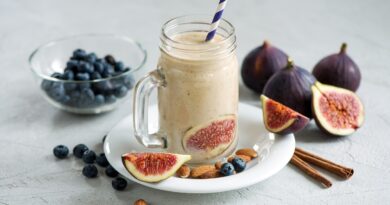Diabetic Diet Therapy
The diabetic diet therapy must be nutritionally adequate; maintain, in so far as possible, normal blood glucose levels throughout 24 hours; and promote desirable weight status in the adult and normal growth and development in children and adolescents. This applies even in those situations where the diet prescription is a regular diet without added sugar or, for children, diet-for-age without added sugar.
Diet Prescription in Diabetic Therapy
The energy requirement for the non-obese adult diabetic is the same as that for normal individuals of the same sex, age, height, and activity. However, the diabetic is cautioned to maintain weight status slightly below his desirable weight. If his daily energy expenditure is significantly less than a normal individual, his calorie prescription may be somewhat less. For example, a 55-year-old woman who is a secretary may require 25 calories per kilogram, not the 30 calories per kilogram recommended for a more active woman. Diabetic diet therapy is all about the calorie prescription for an obese adult diabetic is designed to promote weight loss and is based on the criteria used to establish the calorie level of any energy-restricted diet.
Related Story
Are Detox Diets Really Working?
The American Diabetes Association recommends that 15 to 20 percent of total calories should be derived from protein. For example, at 20 percent a 1500 calorie diet will contain 75g of protein. This is greater than the average protein intake of no-diabetics, which varies from 10 to 13 percent of total calories from protein. For diabetic patients with chronic renal failure, the protein will be limited to what they can tolerate and the total calories derived from carbohydrates will be increased.
The diabetic patient who is dependent on exogenous insulin or an oral hypoglycemic agent to control blood glucose must distribute his energy intake in some reasonable fashion. It will be observed that both stable and labile insulin-dependent diabetic patients using intermediate-acting insulin must consume approximately one-half their energy intake during the hours of peak action of the insulin (two to eight hours after injection or between 7 to 8 am and 3 to 4 pm) and the remainder to provide for the total duration of insulin activity.
FYI
The stable, insulin-dependent diabetic type is usually the patient with maturity-onset diabetes and the labile insulin-dependent is most apt to be the patient with growth onset diabetes. |
Food Selection & Preparation for Diabetic Diets
MILK EXCHANGE – Some patients suffer from elevated blood levels of triglycerides and cholesterol, and in this case only skim milk is used at any calorie level to control the intake of saturated fatty acids and cholesterol. Only a very limited quantity of fat exchanges such as margarine or vegetable oil can be used in the diet pattern.
VEGETABLE EXCHANGE – Vegetables can be used as desired by the diabetic patient. However, if the intake of simple carbohydrates is to be limited, the use of the items in this food group should be limited to one to one and half cups per day and the patient should be guided to select the deep green vegetables to assure an adequate intake of vitamin A.
FRUIT EXCHANGE – The serving size of the items in the fruit exchange food group specifies the amount of fruit, fresh, dried, or canned, without the addition of sugar which contains 10 grams of carbohydrate. When the intake of simple carbohydrates is restricted, the amount of fruit in the diet pattern will be limited. However, the patient should be guided to select a fruit each day that is a good source of vitamin C. if the total carbohydrate allows it, fresh potatoes in large enough quantity can be relied on as a significant source of vitamin C. Fruit drinks with vitamin C added should be avoided because the first and, therefore, most important ingredient on labels of these beverages is sugar.
MEAT EXCHANGES – It is advisable that diabetic patients select lean meats, fish, and poultry, and limit the use of eggs to three a week to control their intake of saturated fatty acids and cholesterol.
CONVENIENCE FOODS – Unless the nutrient label makes it possible to estimate the exchange values of a serving of the product, convenience foods cannot be used by the diabetic patient. The list of ingredients on the packages of many convenience foods indicates that a variety of food fats, lactose in milk solids, or various forms of sugar, such as refiners’ syrup and invert syrups, are used by the processors in formulating these foods.
ALCOHOL – Distilled spirits – scotch, rye, bourbon, vodka, and gin – do not contain carbohydrates, while fermented spirits – beers, ales, and wines contain carbohydrates. Therefore, when alcohol is used the patient should be advised to use distilled spirits. If the energy prescription is 1500 calories or less, alcoholic beverages must be excluded because this source of energy without other nutrients may make it impossible to meet the patient’s daily nutrient needs.
Related Stories
Diet Therapy in Alcohol Induced Liver Diseases
Get updates and read additional stories on the Health Orbit Fan Page.
For Guest posts, Sponsored posts and other details, please click ‘Contact Us’ page.




